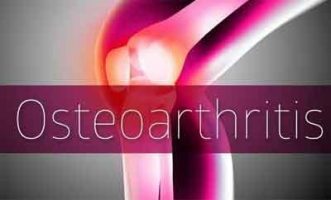- Home
- Editorial
- News
- Practice Guidelines
- Anesthesiology Guidelines
- Cancer Guidelines
- Cardiac Sciences Guidelines
- Critical Care Guidelines
- Dentistry Guidelines
- Dermatology Guidelines
- Diabetes and Endo Guidelines
- Diagnostics Guidelines
- ENT Guidelines
- Featured Practice Guidelines
- Gastroenterology Guidelines
- Geriatrics Guidelines
- Medicine Guidelines
- Nephrology Guidelines
- Neurosciences Guidelines
- Obs and Gynae Guidelines
- Ophthalmology Guidelines
- Orthopaedics Guidelines
- Paediatrics Guidelines
- Psychiatry Guidelines
- Pulmonology Guidelines
- Radiology Guidelines
- Surgery Guidelines
- Urology Guidelines
New minimally invasive procedure for significant pain relief in osteoarthritis

The present treatment avenues including Pain medications including opioids and nonsteroidal anti-inflammatory drugs (NSAIDs, such as ibuprofen), Physical therapy, and Total knee replacements have their limitations. Therefore new treatment options need to be explored.
Researchers at UNC School of Medicine have found that genicular artery embolization (GAE) is an effective treatment option for relief of pain in knee osteoarthritis. The new study has been published in the Journal of Vascular and Interventional Radiology.
"In this study, we showed that genicular artery embolization can be performed safely and that it demonstrates potential efficacy," chief investigator of study Isaacson said.
Genicular artery embolization is a minimally invasive procedure that blocks blood flow to certain parts of the knee that can be the source of OA-related pain. More than 80 per cent of patients with chronic OA also have chronic inflammation, which leads to synovial angiogenesis - the formation of new arteries in the portion of the knee called the synovium. Blood flow to the new arteries can irritate nerves in the synovium, causing pain. Therefore, blocking blood flow to these arteries relieves that irritation and reduces pain. Past studies from researchers in Japan and Korea have shown the procedure has the potential to provide pain relief for up to a year or more.
During the procedure, interventional radiologists block blood flow by inserting a spaghetti-sized catheter into the arteries through a very small incision. The catheter is then directed through the arteries to the knee using x-ray and iodinated contrast. Once the appropriate knee arteries are identified, spherical particles are injected to create a blockage. Because the catheter is used to select only the tiny abnormal arteries, the majority of the blood flow to the knee is preserved. Patients were under moderate sedation during the short procedure and were discharged the same day. No physical therapy was required and patients felt relief from their knee pain within three days.
The two-site trial, funded by Boston Scientific, included 20 patients - 9 men and 11 women - aged 49 to 84 with moderate to severe knee pain from OA. After the procedure, all patients had follow-up visits at one, three, and six months. The decrease in pain reported by participants was significant, so much so that the improvement scores surpassed the researchers' benchmark goal for proving the efficacy of the procedure. Nearly all patients still had an improvement in pain after one month. Around 80 per cent of patients still had less pain after six months. In addition to less reported knee pain, 65 per cent of participants reported a decrease in use of daily pain relief medication.
"We've seen that most patients experience a rapid decrease in pain and disability after GAE for OA-related knee pain," Isaacson said. "This procedure has the promise to be a replacement for injections and the daily use of pain medications, but more research is needed."
Isaacson and fellow researchers are in the process of conducting a randomized control trial, funded by a grant from Medtronic, comparing GAE to a sham procedure in order to determine how much of the improvement observed in these patients may be attributed to placebo. The procedure is currently only available in clinical trials.
For further reference log on to:
https://doi.org/10.1016/j.

Disclaimer: This site is primarily intended for healthcare professionals. Any content/information on this website does not replace the advice of medical and/or health professionals and should not be construed as medical/diagnostic advice/endorsement or prescription. Use of this site is subject to our terms of use, privacy policy, advertisement policy. © 2020 Minerva Medical Treatment Pvt Ltd